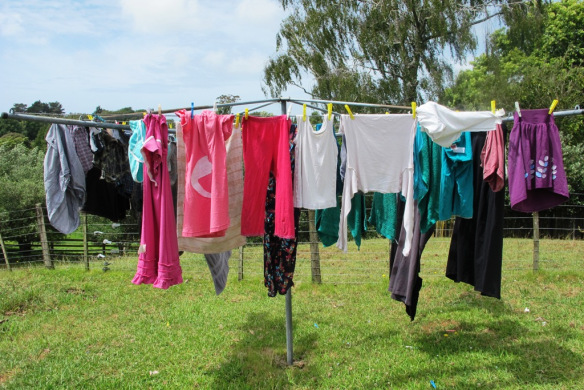Saving Energy
by Ed Sawicki

One household activity stands above all others in energy consumption—at least for middle-class and wealthy families. Drying our clothes. The energy we use for it is staggering.
The average household dryer consumes 3000 watts of power. The laundry experts at The Spruce say that the average household does 8 loads each week that run for 45 minutes each. A survey of my Facebook friends confirms that this is in the ballpark. That's 18 kilowatt-hours of power each week—936 kilowatt-hours each year.
Note: If you're using a clothes dryer powered by gas, you're still using roughly the equivalent of what an electric-powered dryer uses in terms of energy. The difference is you may be paying a different rate for that energy.
There are 129 million households in the United States and 78.8 percent use clothes dryers. That's 101.7 million households. The total energy consumed by clothes dryers in the United States is 95.2 billion kilowatt-hours per year!
Generating that amount of power puts about 41 million metric tons of carbon dioxide into the atmosphere yearly with our current mix of power generation. The mix incluses fossil fuels, wind, solar, nuclear, hydro, etc. with fossil fuels producing the most carbon dioxide.
It takes about 16.4 million acres of forest to scrub this amount of carbon dioxide from the atmosphere.
We can use the low-tech gadgetry shown in the photo to reduce our energy needs, but in recent decades clotheslines have been banned by some homeowners associations.
Given that trees are our lowest-cost tool in fighting the climate emergency, we should protect them by, say, reducing the amount of meat that we eat. You see the connection, right?
Sources
Electricity usage of a Clothes Dryer
Number of households in the U.S. from 1960 to 2019
How much carbon dioxide is produced per kilowatthour of U.S. electricity generation?
Does Your Community Association (HOA) Prohibit Clotheslines?